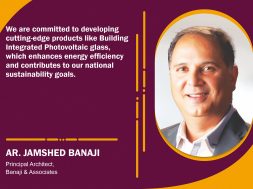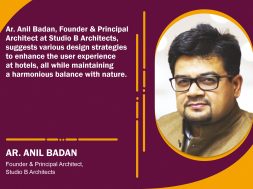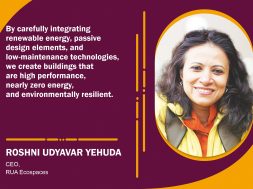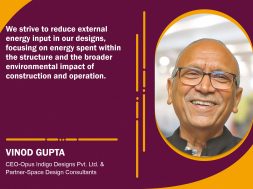Young Architect’s Festival: An Amalgamation of Emotional, Cultural and Social values

Architecture can encourage social merging, participation, safety, recreation, and a variety of other social values; it has a positive impact on user perception of the place.
Ar. Peter Rich, Peter Rich Architects, Ar. K.T. Ravindran, Urban Designer, Ar. Soumitro Ghosh,Mathew and Ghosh Architects and Ar. Mueen Haris, Ds2 Architecture in conversation with Ar. Kritika Juneja of ACE Update.
The CROSSROADS- Young Architects Festival, 2022 hosted by the Indian Institute of Architects, Kozhikode Centre under the aegis of IIA, Kerala Chapter was a three days of sumptuous local delicacies and yatra, hence viewing responses to architects- governance- public engagement, heritage marvels and sketching bliss. Young Architect’s Festival: A Collaboration of young minds and government officials Ar. Peter Rich, says “To the initiatives of the IIA candidates, crossing that bridge and becoming a partner with the city, because there has been a disconnect and we as architects have been alienated worldwide.
To the initiatives of the IIA candidates, getting out of their usual comfort zone, crossing that bridge, to actually become a partner with the city in doing something, because there’s been a disconnect and we as architects have been rather alienated as a group worldwide. We need to start building schools of architecture that partner with city fathers, senior students, do a lot of the research that the city cannot do. We can explore many alternative approaches for the city and teach them how to love and engage with their city in a meaningful way.
Since we need to learn from the people in the discourse, we must get involved in a participatory way. I was here several years ago when the same street was turned into a district, and I think the city is big enough to admit that. In previous times, there wasn’t a concept of consultation with the people. In other words, if they had been the consultation, they would have been empowered. Moving forward, let’s create more enabling environments where everyone can talk to one another and learn from one another.
Ar. K.T. Ravindran adds “Young minds and government officials have opened up doors of communication that wouldn’t normally be available, resulting in both sides developing, thus breaking the ice mutually . As an eye opener, we learned how progressive political representation works. Because what is good for the people, we can also bring in access to political representation.
Ar. Soumitro Ghosh elucidates further “A unique competition was identified by the architecture community, as well as realized that without taking people and representatives of architects as a kind of tradition to unfold whenever there is a project partner to create design, design, rather than looking at it, does not bring in innovation and mind together.
Therefore, there are qualitative spaces that can be created from actual collaboration. Taking about the event was a huge success, Ar. Mueen Haris says “The event was a definite success especially considering the quantum of cross-pollination of ideas that took place. Students and younger practices learning from the stalwarts of the industry and vice versa.
The collaboration between young minds and government official surely highlighted challenges and possibilities on the policy levels as well as elaborated in depth on the future of urbanism and how a robust communication and collaboration between the architectural fraternity and government can benefit the society at large. The event bought together diverse practices under one umbrella and by providing them a platform to interact and collaborate not only encourages the practice itself but also reinforces confidence and camaraderie within the fraternity.
The key take aways from the event has to bein the insights that each practice shared. These insights ranged right from conceptualization to zoning to marketing and even to the economics of architecture. These insights would not only enable individuals in identifying common hurdles but also optimize their practice and thinking to a large extent.
Defining Good Design Ar.KT Ravindran says “A good or bad thing depends on its relevance in the context. For example, your hair is very beautiful on your head. When it falls in some eatable, it’s not because it’s out of context. They’re able to meet those requirements contextually if they’re present and articulated in the project brief. Additionally, it requires acceptance from the people, including all owners, users, custodians, and politicians, who are officially responsible for its maintenance and investment. It is the architect’s responsibility to interpret the contexts correctly, and to provide the right responses to the contexts.
Architects must learn to empathize with the real issues that affect the final user experience, only then can they interpret context, Elucidating the measure of good design, Ar. Peter Rich concludes the discussion “Architecture that is well proportioned will not make you feel serenity and tranquility when you enter a space because that is when the space will be well balanced.
A good architecture is something that enables its user to have a pleasure of use. It’s the poetic side of pleasure, is the happiness you get through being in the situation. As architects, you need to label a lot of bad architectures just enabled. Just as you take tribal people who are structured societies as families, if you put them in the wrong apartment, with a different, you completely smashed the society.
34
Cookie Consent
We use cookies to personalize your experience. By continuing to visit this website you agree to our Terms & Conditions, Privacy Policy and Cookie Policy.









